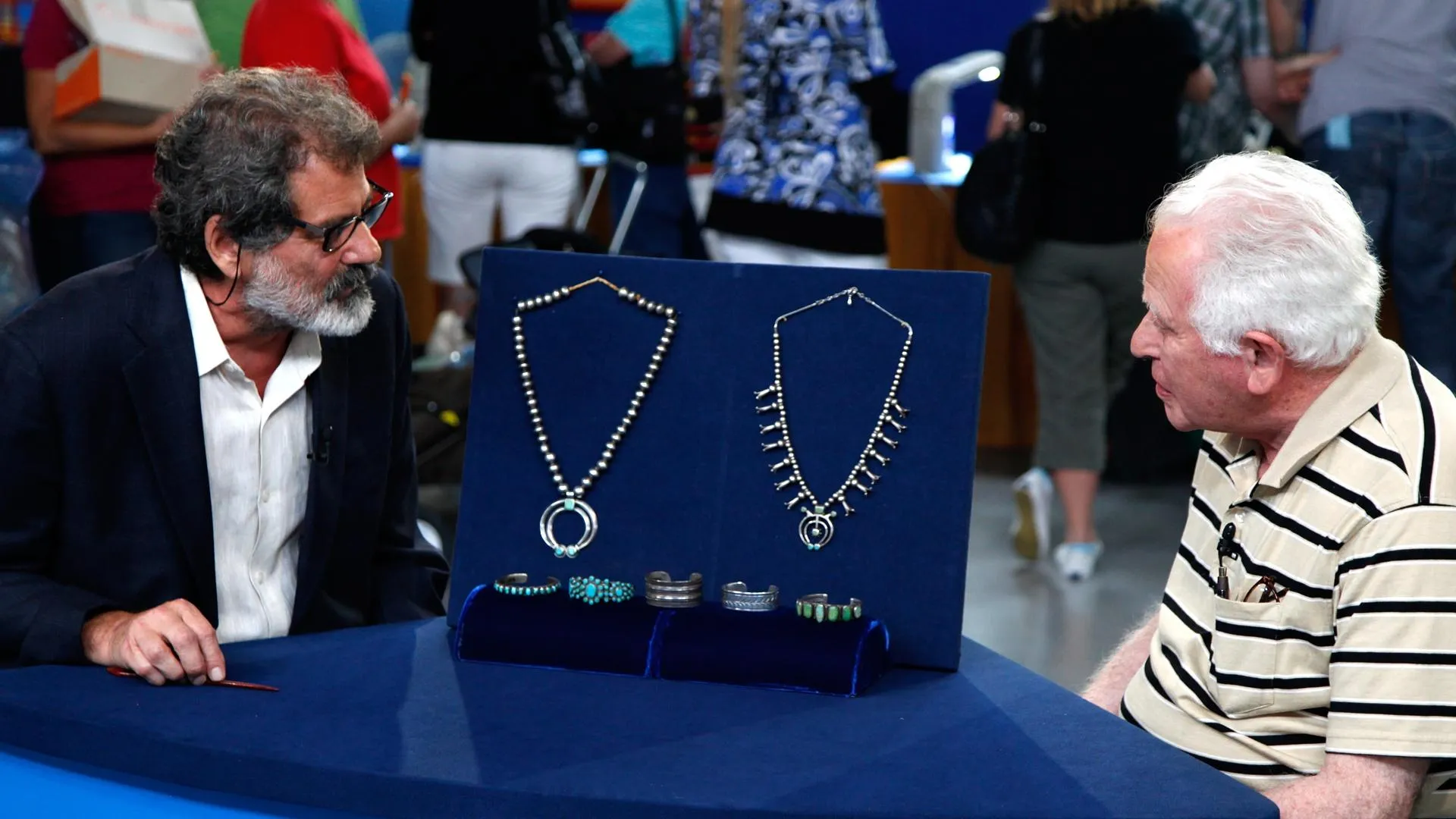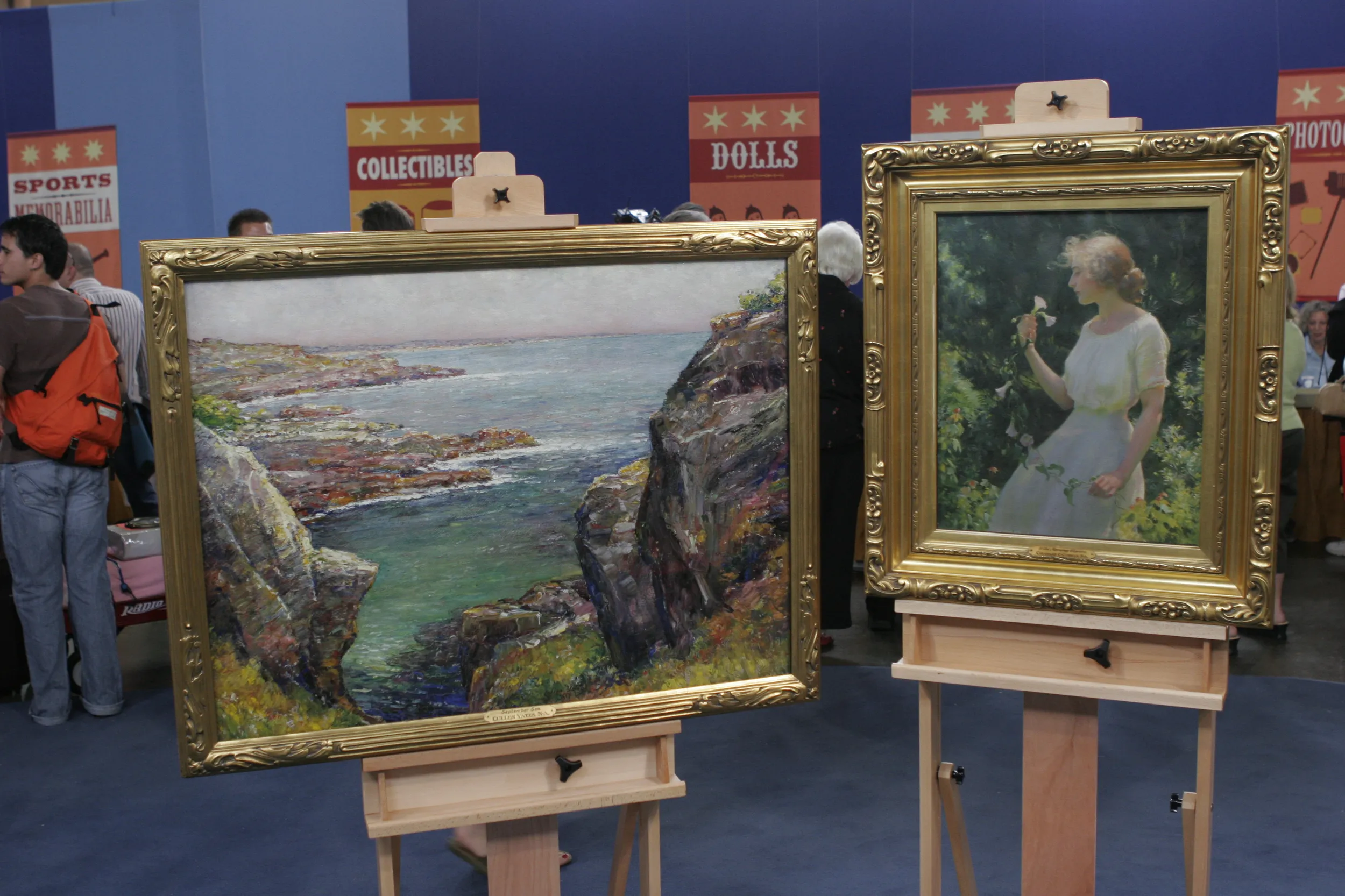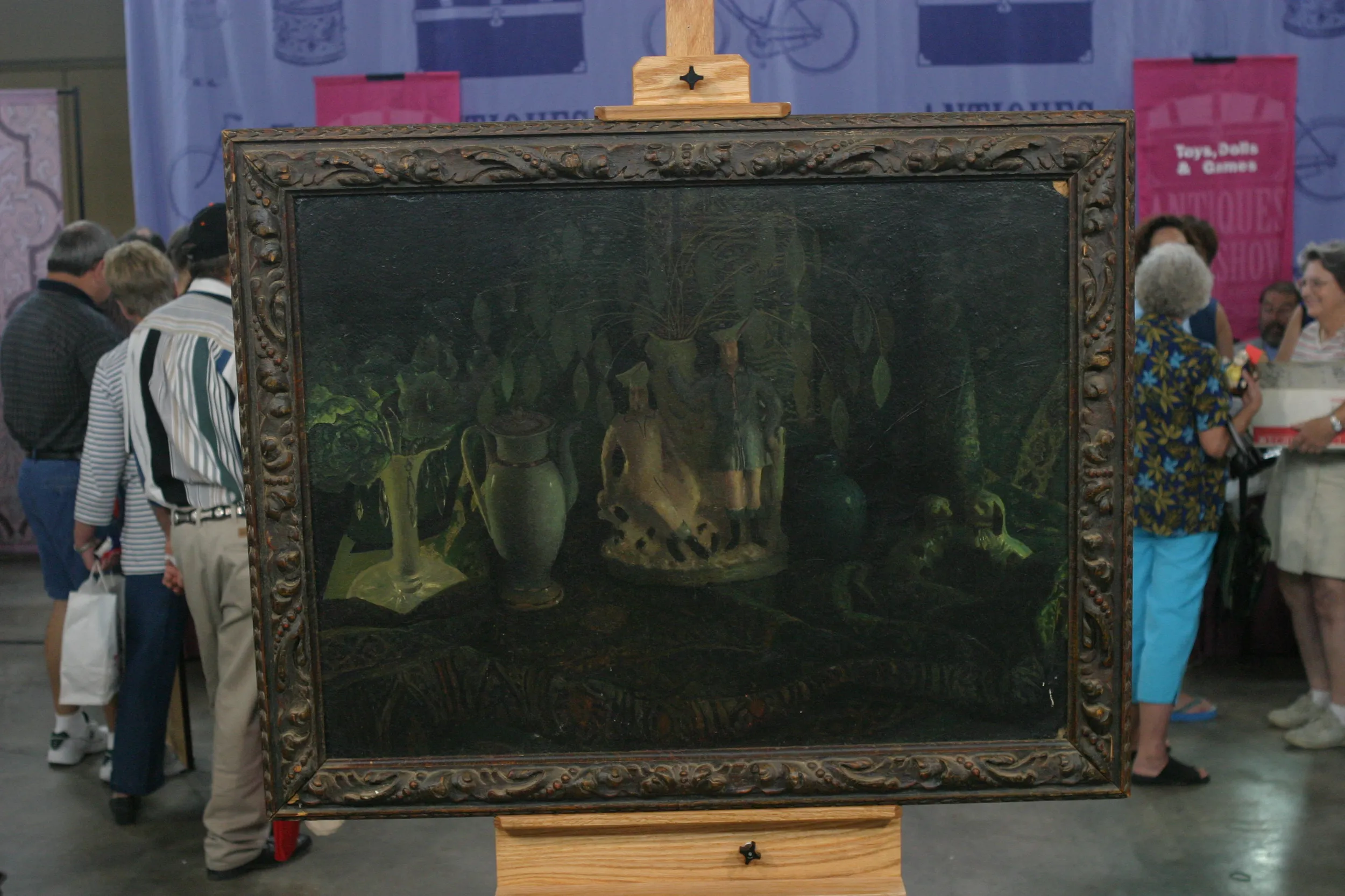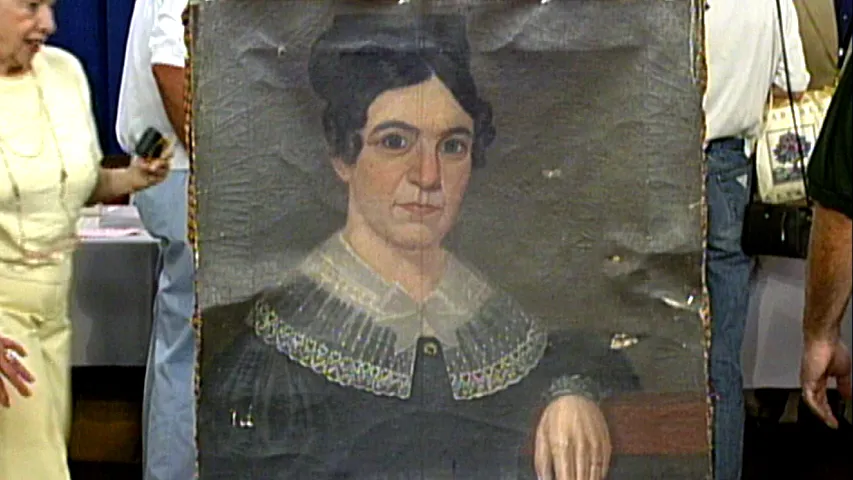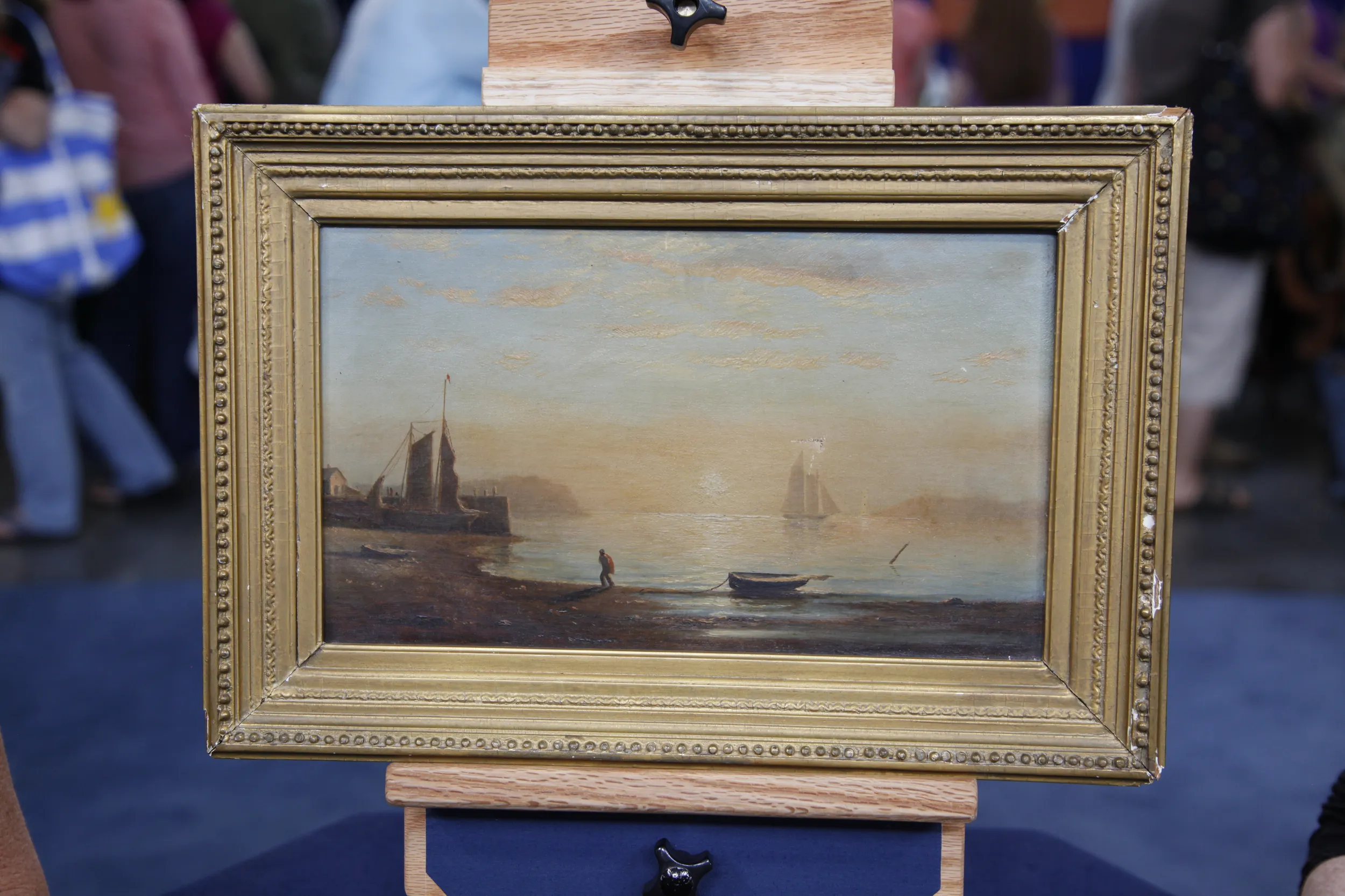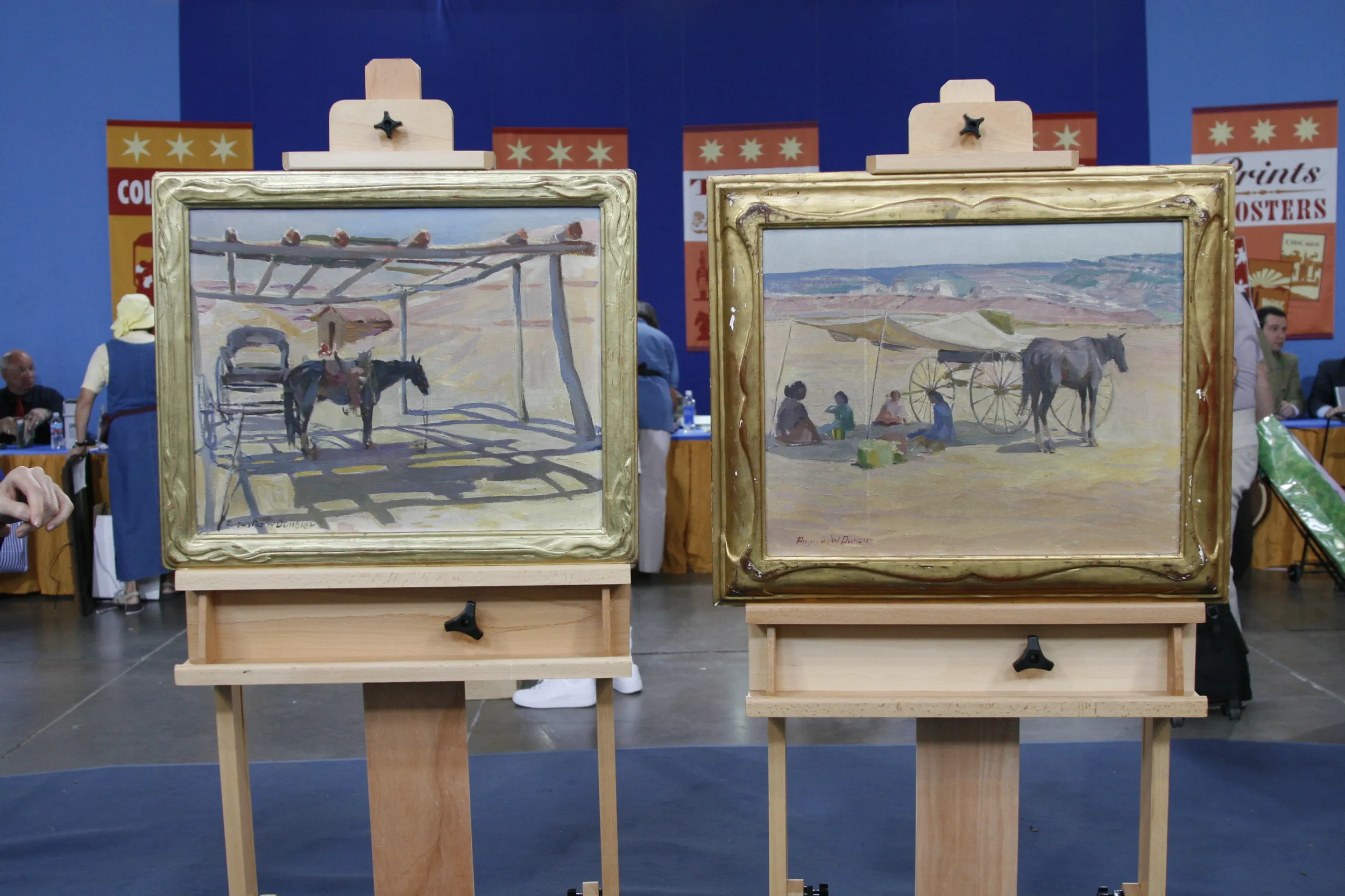GUEST: My mother bought it at an auction in the early '50s in South Dartmouth, Mass. She bought a big house in New Bedford, and she went to auctions to try and fill it up. And she bought a lot of things, but this was her most prized find. And she always talked about it.
APPRAISER: And do you have any idea how much your mother paid for it at that auction?
GUEST: No, I don't. I'm sure it wasn't a lot of money. She wouldn't have paid a lot of money.
APPRAISER: And who is the artist?
GUEST: It's Charles H. Gifford, I believe. And he was from Fairhaven, Massachusetts.
APPRAISER: Do you know anything else about him?
GUEST: I know he died in the early 1900s and that he had a studio in Fairhaven, on Poverty Point.
APPRAISER: Okay, well, he was actually by trade a shoemaker. I think not very different from today, his parents were worried about his ability to make a living as an artist and insisted that he learn a trade. He also enlisted in the Union Army and fought in the Civil War and was in fact a prisoner of war in the Confederate prison in Richmond…
GUEST: Wow.
APPRAISER: …for a time. He returned to New Bedford, and New Bedford at the time was an incredibly wealthy and booming town. It was the center of the whaling industry, and in the 1850s was a huge center of wealth and affluence. And there were a great many artists who were affiliated with the New Bedford area. And he had the opportunity to see this work of Bierstadt in particular, who he is recorded as saying was his inspiration for becoming a painter. He was in the right place at the right time for someone with his aspirations. He had no formal training that we know of, but he was obviously really talented. But there's a school of painting, this very dramatic but very serene kind of crystalline, calm, beautiful, quite realistic, but at the same time very atmospheric, appearance. And he was very influenced by those people. And you have a beautiful little luminist painting here. This picture, if you should have it professionally cleaned, will amaze you. The fact that it needs cleaning is one aspect of the condition. Aside from that, it's in very good condition, except for this one puncture. It can be fixed.
GUEST: Oh, good.
APPRAISER: As lovely as it is right now, it would be... Even more lovely. ...much, much more beautiful. Do you have any idea what you think it might be worth?
GUEST: I think maybe $10,000, $15,000, maybe. Somewhere along those lines.
APPRAISER: Well, I think at auction today, this picture in the present condition would probably sell in the $3,000 to $5,000 range.
GUEST: Oh.
APPRAISER: If you had it cleaned and restored, it wouldn't surprise me at all to see it make more like $4,000 to $6,000. But I think what happens to people is they see the work of artists who are associated with this school, and they have the impression that all that work is worth in the same range.

